History can actually be fun, discovers Uttam Ghosh/Rediff.com
With history and nationality being hotly debated in universities all over the country, not many would have noticed a museum on wheels quietly moving around in Mumbai for the last few months.
On the day I visit, the mobile museum, with images of Gautam Buddha, Emperor Akbar, a Harappan seal, the dancing girl from Mohenjodaro and the Taj Mahal painted on it, was parked in a corporate park in central Mumbai. This area was once known as Girangaon and was dominated by textile mills and chawls, where the workers lived.
The skyline, then lined with chimneys, is being rapidly replaced by huge high rises and shiny corporate parks as you can see in the photographs below.
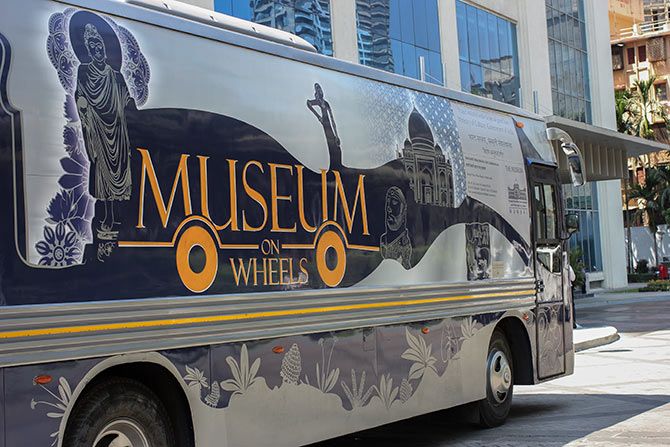
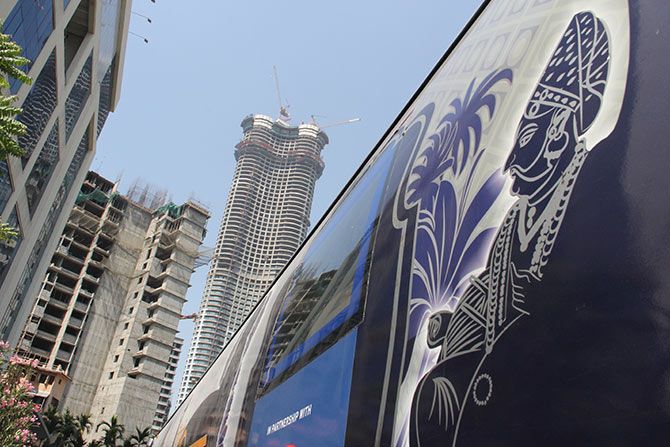
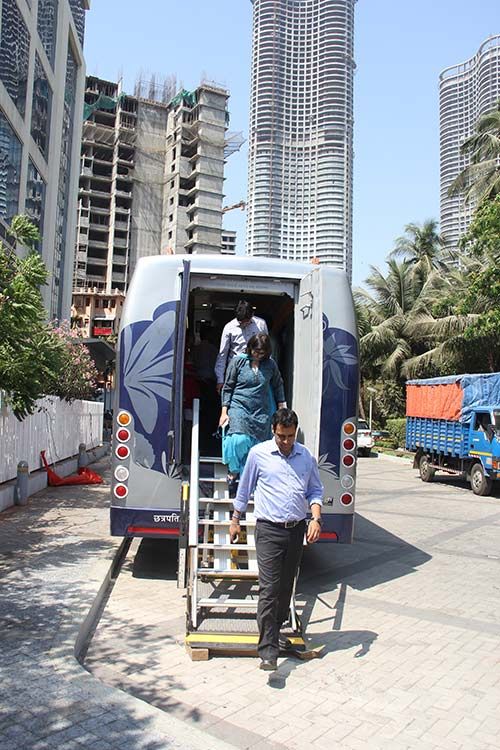
The moving museum is hosting a special exhibition, The Magic Workers of Harappa. Curated by the Chhatrapati Shivaji Maharaj Vastu Sangralaya (formerly known as the Prince of Wales museum), it showcases a 5,000 year-old-civilisation.
According to Dale Sajan (in pink, below), our guide from the museum, most of Harappa is in Pakistan and Afghanistan today and partly in our country... three nations and a common history.
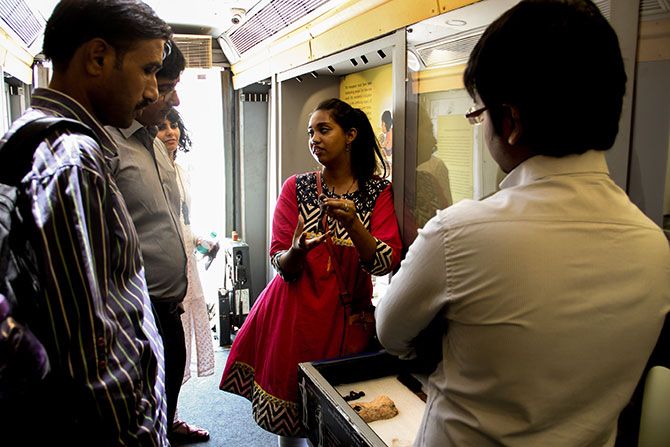
The exhibition includes a seal making workshop, which proves very popular.
The seals bear a script that belongs to three nations. Archaeologists the world over are still trying to decipher what it says.
Would I become an anti-national by making the seals in a 'foreign' language? Was something unpatriotic written on them? Or anti-national? The animal motifs... which country do they belong to?
Strangely, I do not need a passport or a visa to enter this tiny time capsule. I feel as if I have been beamed into the past, into three countries, even as I remain in the heart of Mumbai.
I decided to become a Harappan for a day.
Anil Mhatre (below), a graduate from Mumbai's Sir J J School of Art, guides us in making the seals.
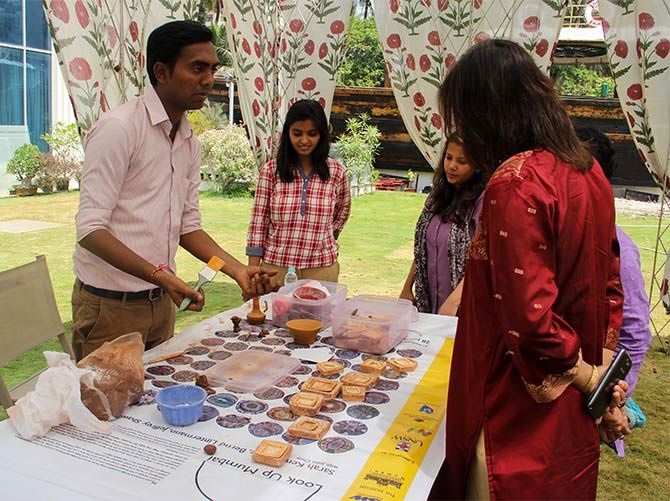
The red terracotta mud used to make the seals, Anil tells me, is also known as Kutch clay. It has been brought from Dharavi in north-central Mumbai, where an entire area, Kumbharwada, is dedicated to potters.
The seal-making process is simple.
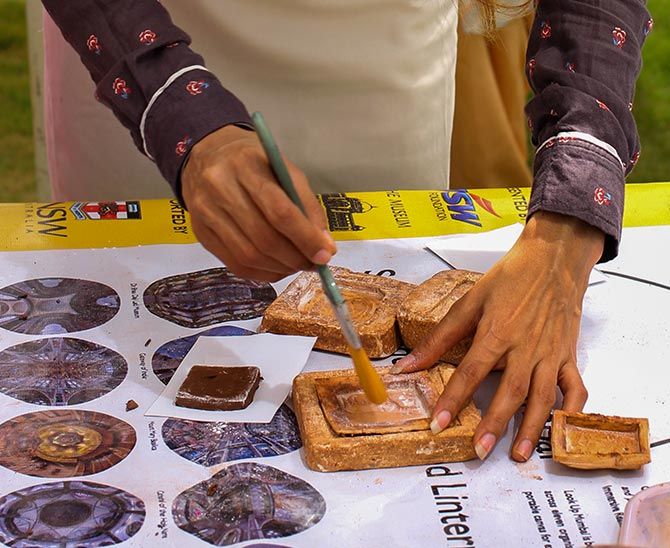
First, the moulds are brushed lightly with talcum powder so that the clay does not stick to it.
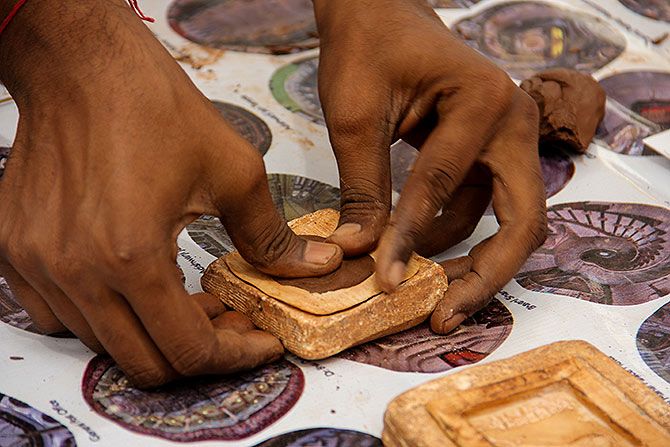
The clay is then pressed evenly onto the mould.
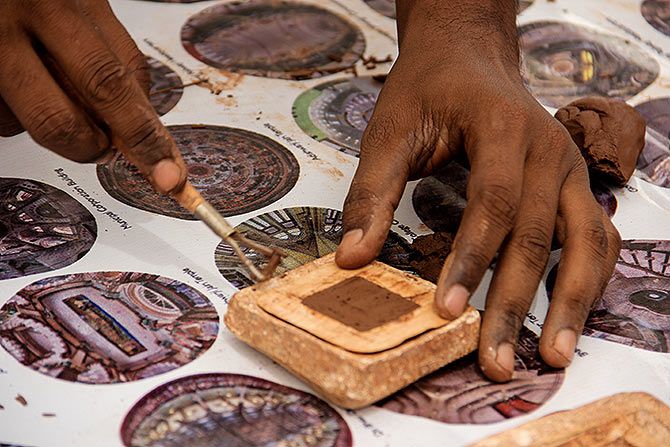
The extra clay is removed with the help of a scrapper tool.
The seal is then carefully removed from the mould and kept to dry.

And here are the moulds and the tools
Normally, visiting to a museum in a city like Mumbai is limited to the summer months when the children are on vacation. Even then, it would take a lot of convincing before they would grudgingly agree to devote an entire day to the expedition.
But the mobile museum makes history fun. It did not take more than 20 minutes to go through the presentation.
The mobile museum now plans to go to schools and educational institutions in rural and semi-urban Maharashtra.
Here's what else you will see there (Note: all exhibits are replicas):
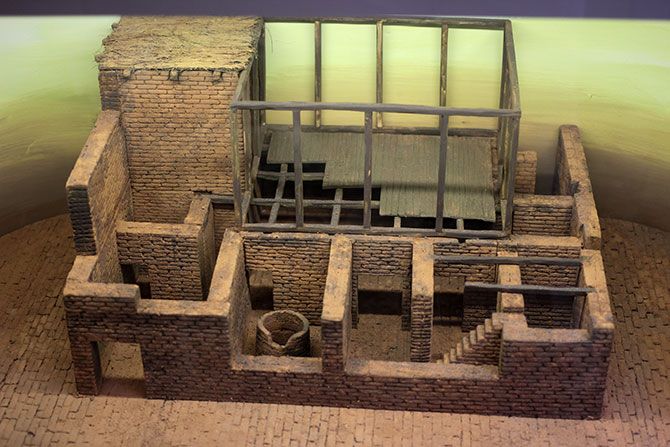
The homes that the Harappans built were very advanced, going up to two floors. The town planning included an excellent drainage system.
The script, which is yet to be deciphered, is pictorial and read from left to right and from right to left as we progress to the next line.
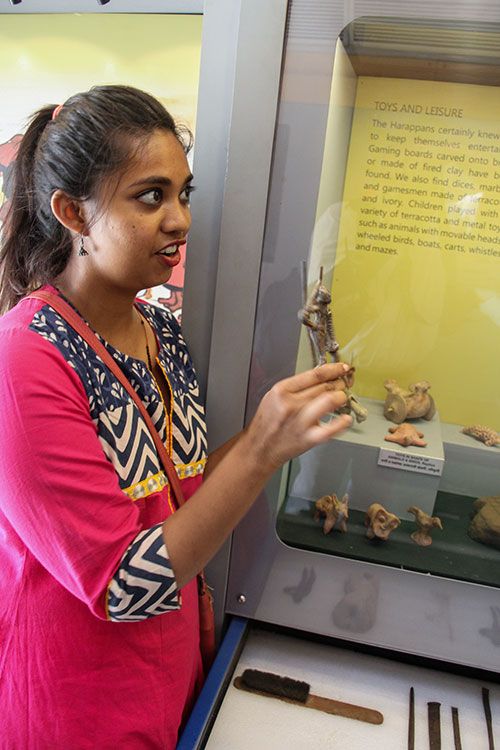
This was the era when they discovered copper and used it to make their tools and implements.
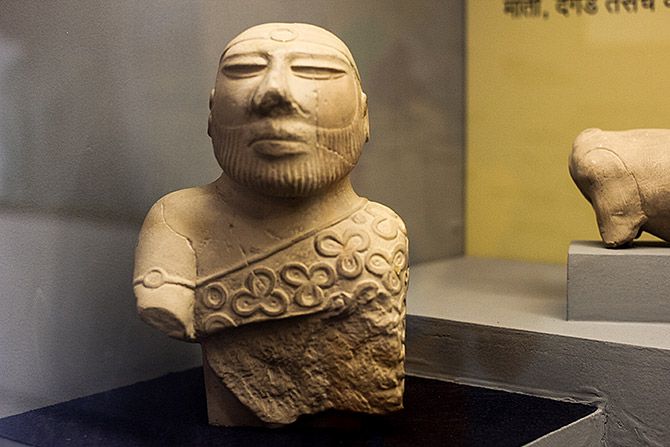
The popular bust of the bearded man which we have all seen in our history text books in school has floral motifs on a shawl-like attire which meant that they had textiles even then.
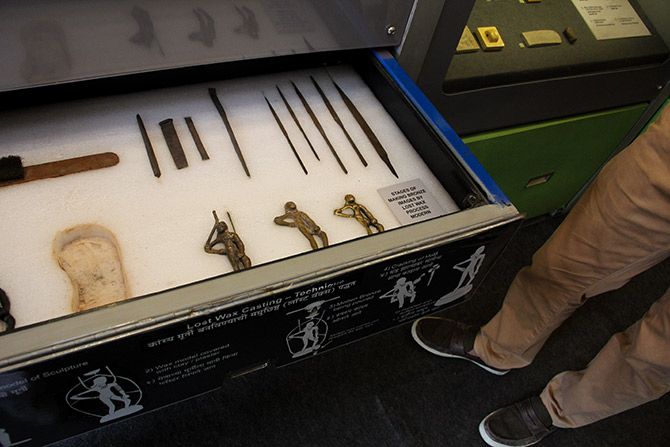
The dancing girl was moulded in bronze. The mobile museum has replicas of the different stages of the moulding process of the lost wax casting technique.

Here's one of the most popular exhibits.
The only drawback, if you can call it that, is that not more 10 to 15 people can fit in comfortably in the bus at any given time.
All Photographs: Uttam Ghosh/Rediff.com







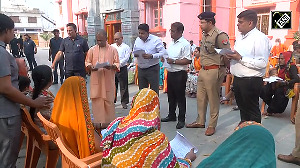


 © 2025
© 2025